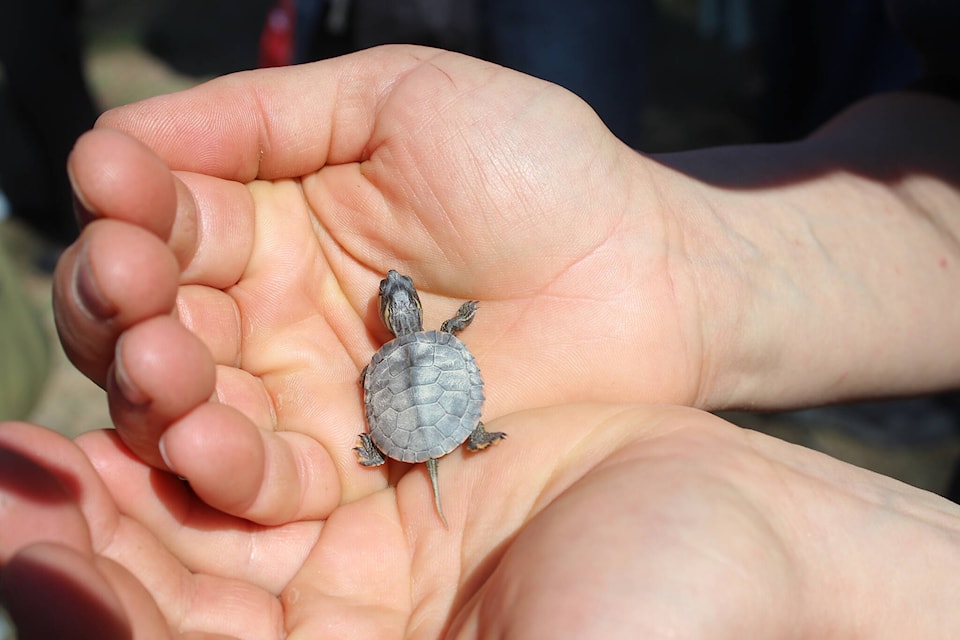The public watched young turtles take their first steps outside the nest at Elizabeth Lake on April 23.
Families, wildlife enthusiasts and school groups gathered at the lake to learn more about Western painted turtles and their habitat. The tiny little critters were displayed for visitors in a glass tank, and people were able to take turns holding and interacting with them.
The event is an annual tradition. Each year, turtle researchers with the Rocky Mountain Naturalists take a few juveniles as they emerge from their nests and put them on display for the afternoon, before releasing them into the lake.
Fish and Wildlife Compensation Program director Angus Glass said that the turtles hatch from late summer to fall and spend the winter in their nests, emerging for the first time in the spring. During the colder months, they enter a hibernation-like state where they have an undetectable heart rate and they don’t eat.
They are carnivorous when young, feasting on snails, tadpoles, aquatic insects, earthworms, fish and carrion; but transition to being herbivorous later in life with a diet of algae and marsh vegetation.
Glass said the turtles are perfectly suited to a watery environment, having glands that allow them to absorb oxygen very slowly, and special minerals in their shells that counteract the build-up of lactic acid that results from this bodily process.
ʔAq’am Nasuʔkin (Chief) Joe Pierre was a special guest this year and he provided opening remarks at the event. He stressed the importance of treating all living beings with respect and being an environmental steward.
Rocky Mountain Naturalist turtle researchers Greg Ross and Katrin Powell talked about how they study the turtles and protect their nests from predators. They monitor the nests year round and keep records of the number of turtles and eggs in their nests. They also clear paths in the nesting grounds to make it easier for hatchlings to reach the water.
Powell said there were 63 nests laid this year, which is lower than the recent annual average of 80 to 100 nests. While the reason for this lower count remains unknown, Powell said it isn’t unusual to see smaller numbers every so often.
She also reported a few mortalities in the nests, which is a typical occurrence.
The Western Painted turtle is the only native freshwater turtle in B.C, and it is considered an ‘at risk’ species due to a variety of factors including habitat loss, road incidents and competition from invasive turtle species.
Cranbrook environmental groups began protecting Western painted turtles in the 90s due to high mortality rates while crossing Highway 3 to lay eggs at Elizabeth Lake. Rocky Mountain Naturalists collaborated with the Fish and Wildlife Compensation Program and the provincial government to build fenced-in sandy nesting beds on the lakeside to discourage turtles from journeying across the highway, and prevent skunks and raccoons from digging up the eggs and eating them.
As such, Turtle Day was born.
